Cucurbit vegetables come in many different shapes and sizes, from giant pumpkins to miniature gherkins, and although they all need healthy, nutritious soil, they have their own little growing preferences. When you learn more about these vegetables and how best to grow them, you can enjoy your favorite cucurbit plants whenever you want.
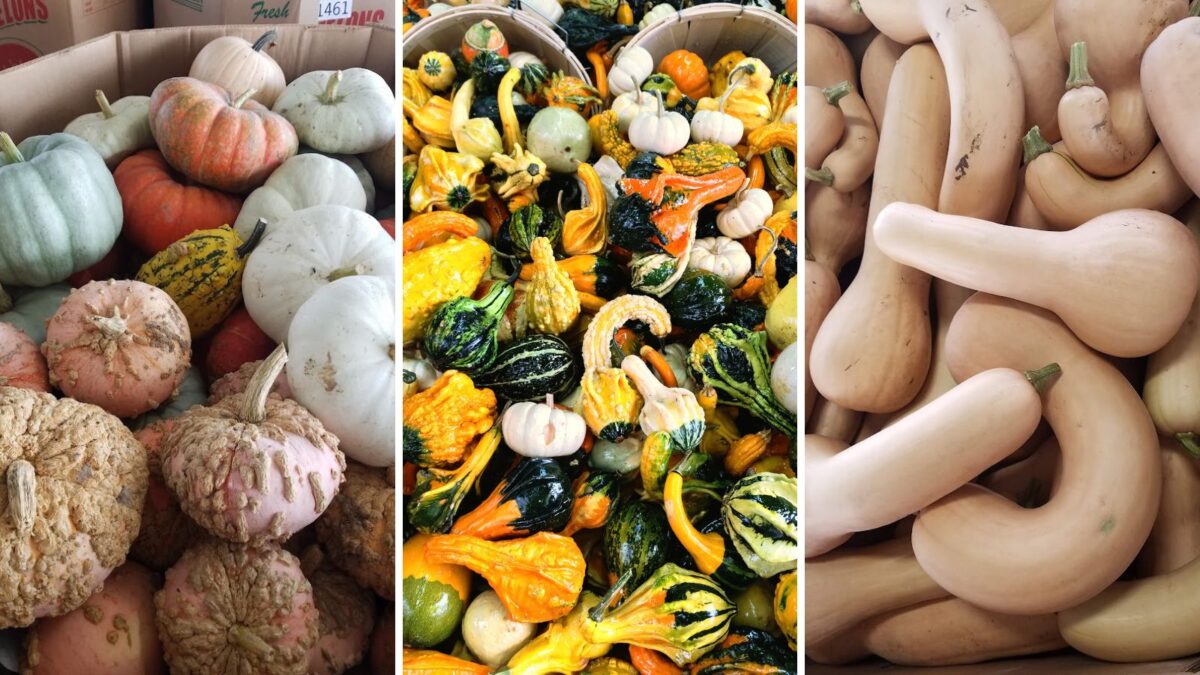
What do you need to know about these plants? It’s my goal to answer that for you today. A short and simple answer is that these cucumber relatives taste delicious and are typically relatively easy to grow. Members of the cucumber family (cucurbits) can include zucchini, squash (winter and summer), pumpkin, gourd, watermelon, cantaloupe, cucuzzi, cushaw, and luffa.
Many cucurbits are climbing; some like to trail, and others are happiest staying wherever you plant them. Some cucurbits prefer the heat, and some varieties thrive in cooler weather. You can have cucurbits year-round if you know which ones to plant and when.
Cucurbits are, without a doubt, one of my favorite garden groups. They provide our family with some great additions to salads, pasta dishes, and BBQs. They will also help to feed us in the winter with a mass of homemade soups we freeze. Does that sound like something you’d like to be able to do yourself? Well, it all starts with learning about the different types. This cucurbit vegetables list will help you do just that.
Here is a list of cucurbit vegetables and some growing help and advice.
Cucurbit Vegetable List
This cucurbit vegetable list will help you identify some of these amazing vegetables and provide some tips for growing them if you want to add them to your own garden. You’re going to see a lot of veggies from the guard family on this list, but you might also see some others that you didn’t realize would make the list.
While some cucurbits produce fantastic edible plants, as I will show you below, some have other uses. This makes the plant family Cucurbitaceae very diverse.
1. Pumpkins
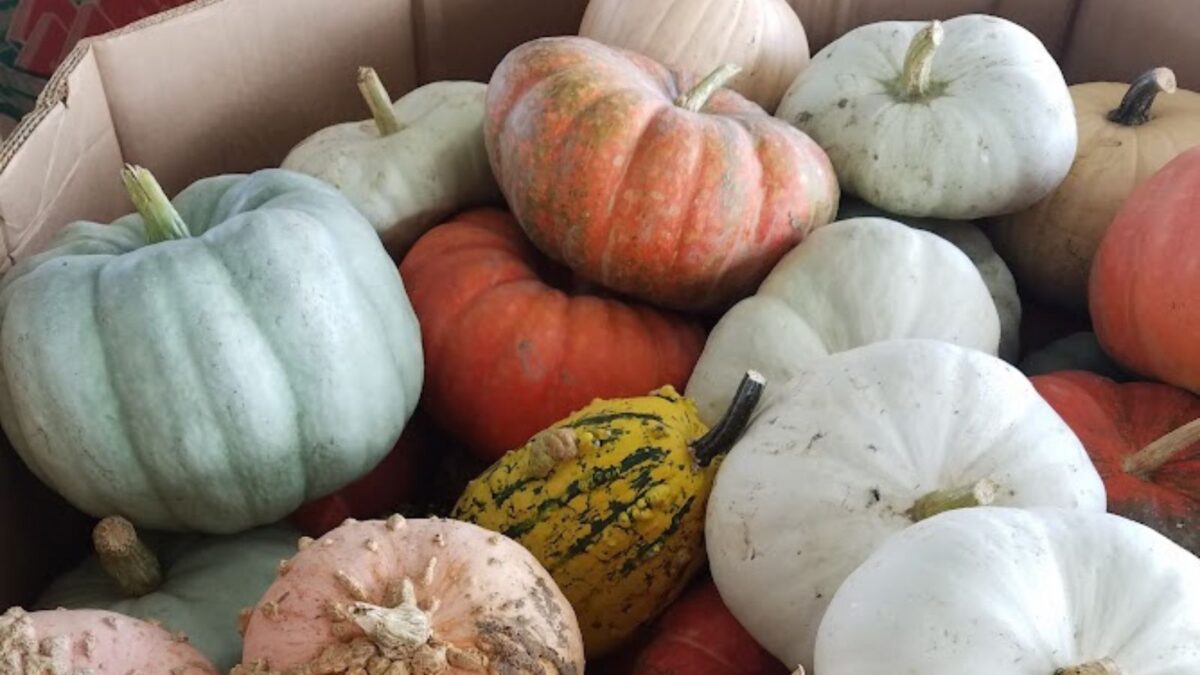
Depending on their variety, you can sow pumpkins in pots during April or directly on the ground in mid-May. They need a lot of trailing area, so leave 30 inches to a yard between plants when you plant. Harvest as late as possible when the foliage has died back and before the first frost.
There are many varieties, from the orange Halloween type to giant pumpkins that can grow over 1000 lb to little colored varieties that are great for stuffing and roasting.
Whatever variety you grow, you should lift the fruits onto a board or pallet as they grow. If the ground stays wet, they can rot.
If fruits are not setting, use a paintbrush to agitate the flowers to pollinate them.
2. Marrows
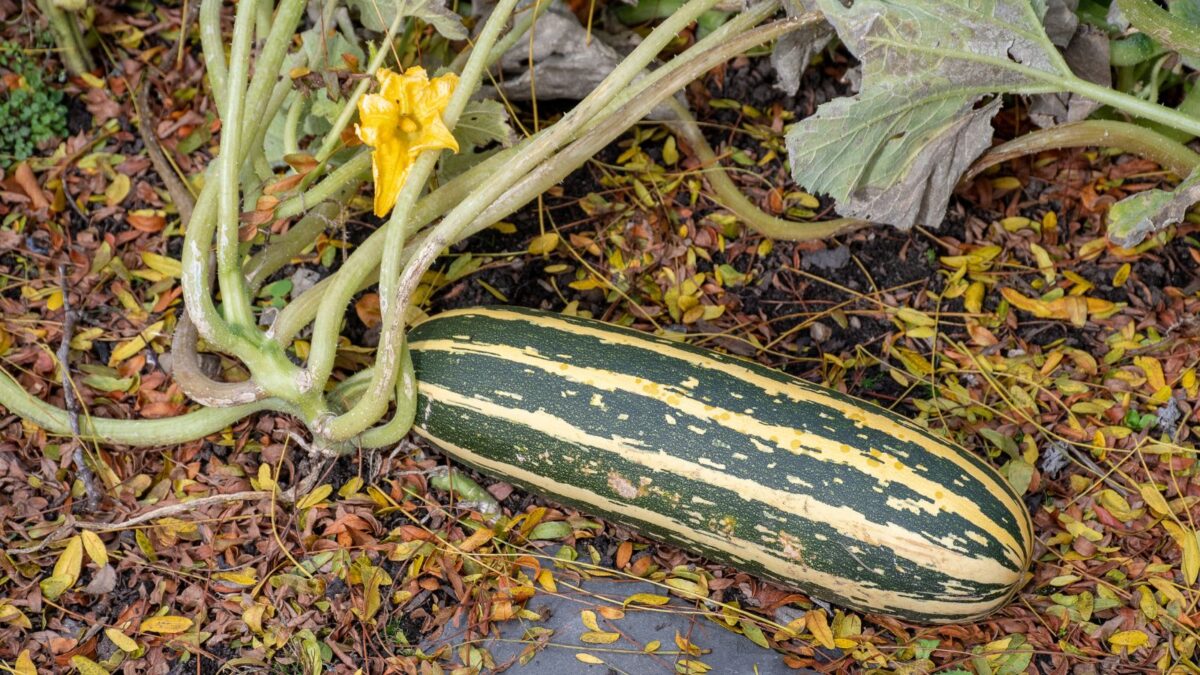
Growing marrow is similar to growing all other cucurbit vegetables: make sure to allow about 3 feet between each plant. The popular green marrow is probably the best known, although there are different-sized and colored varieties now on the market.
Marrows are a bit larger and longer than zucchini and can range in color from light to deep green.
3. Zucchini (also known as courgettes)
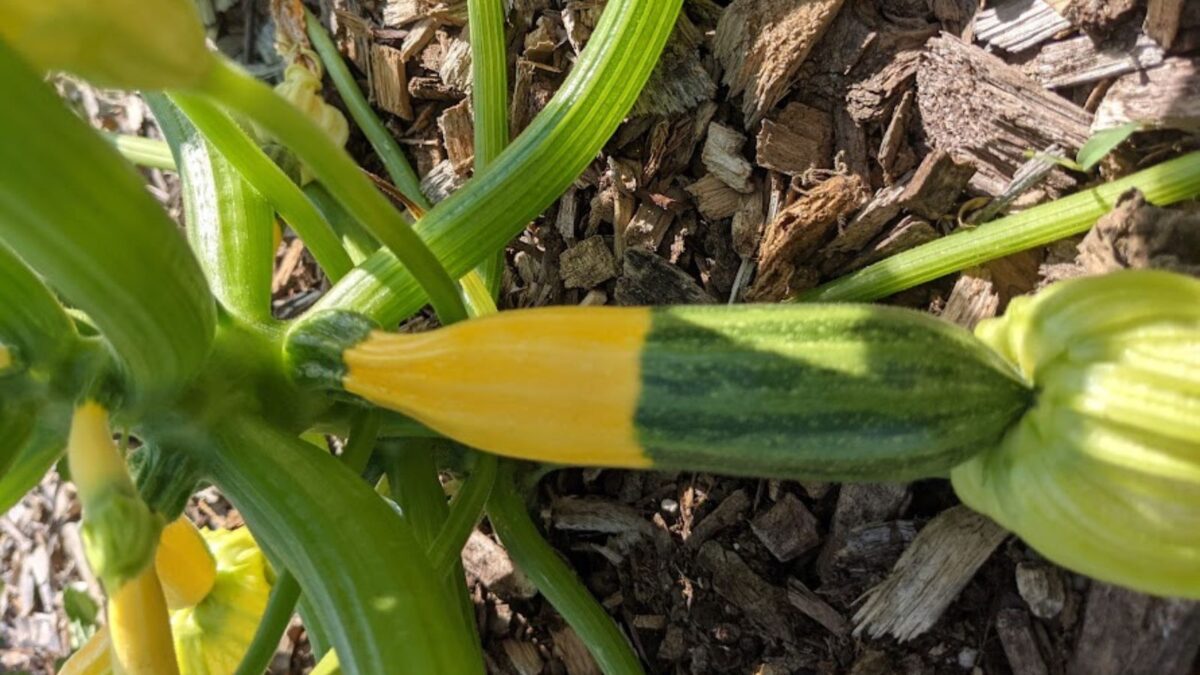
Courgettes are my favorites. We love eating them raw, making zoodles, frying them, and yummy soups for both summer and winter. Here’s how to freeze zucchini so you can enjoy them year-round 😉
Courgette plants will need at least 40 inches of space as they tend to get quite big.
If you grow zucchini, you must gift these curly zucchini fries a try.
4. Squash
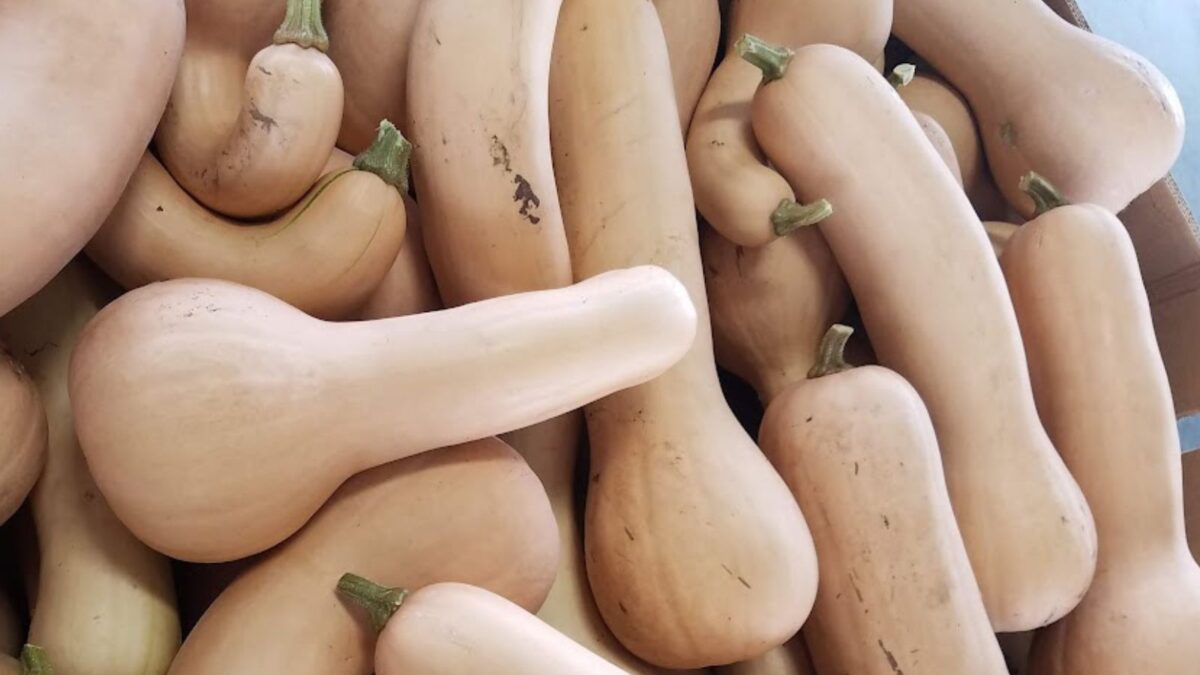
Squash is a generic name for quite a variety of cucurbit vegetables. It can come in various shapes and sizes. Summer squashes tend to be quite small, have soft skins, and don’t store well.
Winter squashes are harvested late in the fall; some varieties, such as the bottle-shaped butternut squash, the pumpkin-shaped dumpling squash, and the stringy spaghetti squash, can be stored for up to six months.
Try some of these Butternut Squash Soup Recipes: they are delicious!
5. Cucumbers
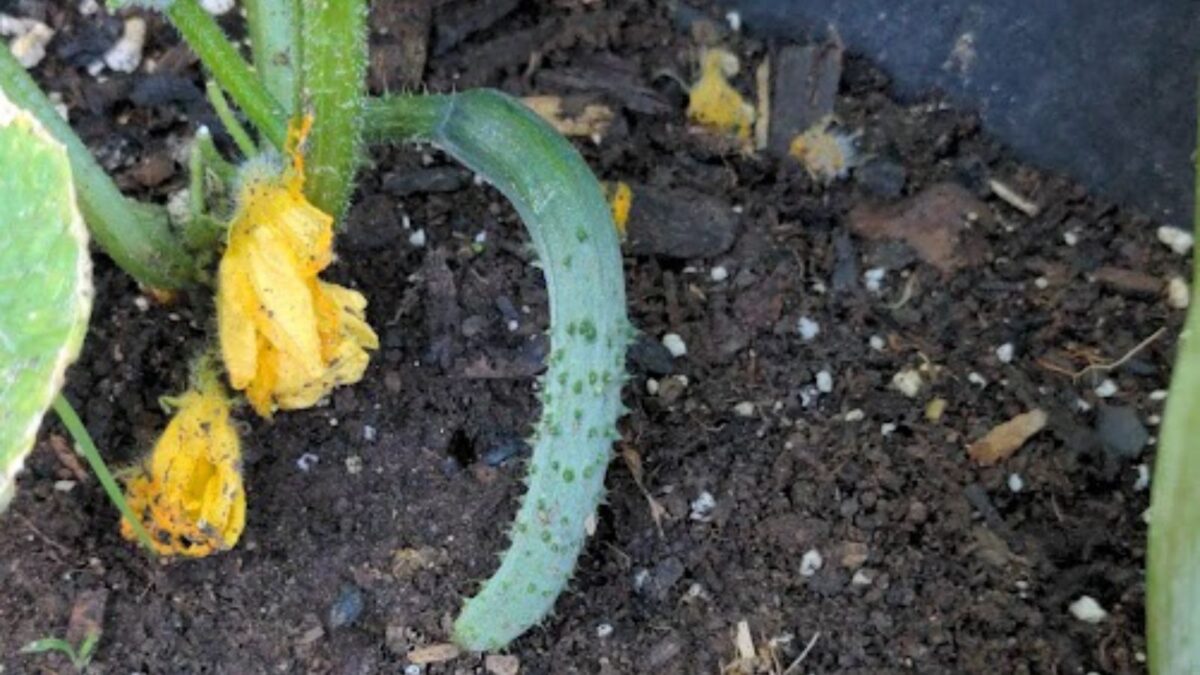
One of our favorite crops to grow is cucumbers, which do much better outside in the garden (we tried them in the greenhouse, and they did poorly). There are many different types of cucumbers. Outdoor cucumbers are easier to grow and have a much better flavor.
Sometimes, male flowers caused fruits to have a bitter taste, so it was good practice to remove them. This has been bred out of most varieties, so when choosing cucumber seeds, choose F1 varieties. Gherkins are small cucumbers and can be grown in much the same way.
Learn more about cucumbers:
- The Ultimate Guide for Growing Cucumbers
- How To Get Rid Of Cucumber Beetles
- What To Do With Overgrown Cucumbers
- What To Do With Overripe Cucumbers
- 11 Best Companion Plants for Cucumbers (And 6 to Avoid)
6. Gourds
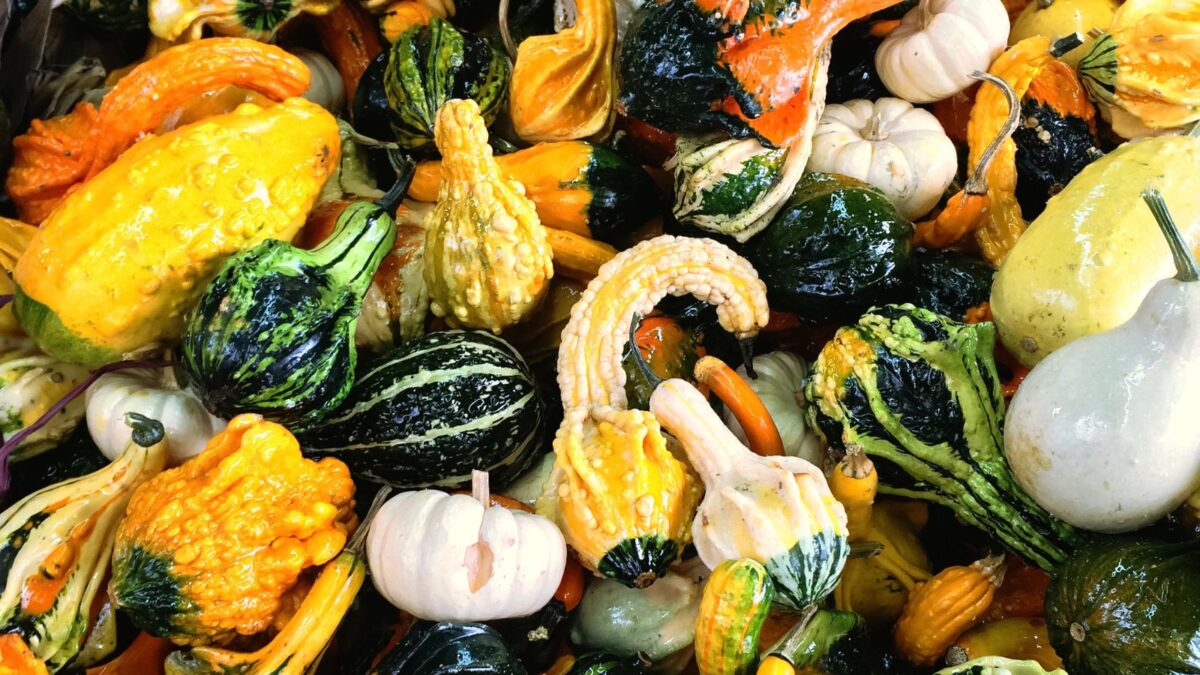
Gourds are mostly grown for their aesthetics rather than for eating. Coming in a wide variety of shapes, they are likely to be used in craft projects and to make birdhouses (large gourds make really unusual birdhouses.)
Drying your own gourds is a very simple process: leave them on the vine even after the leaves of the mother plant have withered. Once the gourd becomes light, it can be cleaned and decorated.
What can you make with gourds? They make beautiful fall decorations but can also be used as ornaments. You can even make vases and bowls for autumn decor.
7. Watermelons & musk melons
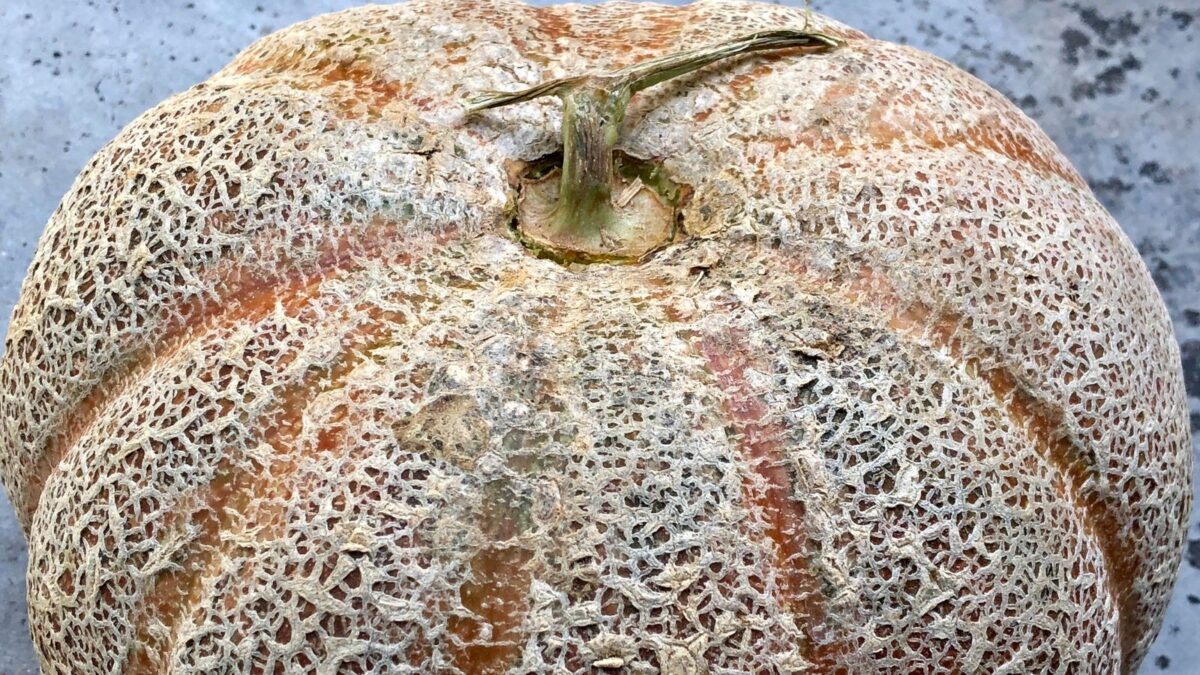
While having completely different origins, watermelons and musk melons are both grown similarly. Both need to be grown in the greenhouse for a reliable crop.
The watermelons can get quite big and trail over the greenhouse floor, while the musk melons can be trained to climb.
Bitter melon does have a bitter taste, but it has culinary uses as well. It becomes more bitter as it ripens, so getting it early means less bitterness.
About Cucurbits

Cucurbits produce both male and female flowers, but they both occur on the same plant, which differs from other flowering plants. Pollen has to be transferred from the male flowers to the female flowers to get fruit. This transfer of pollen is usually done by bees or other pollinating insects.
You mustn’t use insecticides that will make these pollinators stay away. If you must use insecticide, you can do it later in the afternoon, once the bees have had time to pollinate in the morning.
Only the female flowers on a cucurbit will turn into fruit. Some cucurbits, like cucumbers, will have many more male flowers than female flowers. Don’t be fooled by seeing lots of flowers and thinking you’ll have a huge cucurbit load. If those flowers are male, they will fall off, and no fruit will be produced.
So, how can you tell the difference between female and male flowers? The showy part of the flower will usually look very similar. But you can tell the difference if you look closer behind the flower. The female flower has an ovary. It looks like a miniature version of the fruit that should eventually form on it. If you’re talking about a cucumber, the female flower will be connected to the vine with what looks like a very small cucumber. An ovary in a female watermelon will look like a small watermelon.
The Best Soil For Cucurbits
Cucurbit vegetables tend to produce either many small fruits or fewer very large fruits, but either way, they will need a lot of nutrition to help them achieve this. It all starts with the perfect soil.
Preparing the bed for these vegetable plants is relatively straightforward. We tend to empty the contents of our compost bins and wormeries into this area of the garden, as this provides plenty of fertilizer and allows the soil to hold more water. We would also dust in some general fertilizer, such as blood meal fertilizer.
The plants in this vegetable group need a lot of space since each plant can produce a lot of fruit. Do not be tempted to sow too many seeds.
Think about spacing zucchini, pumpkins, and squashes at one-yard intervals. It may also be worth planting through a weed control fabric, as once these plants spread out, they will cover a lot of ground.
You could train your butternut squash and cucumbers to grow up a solid frame. While this won’t save much space it will make it a lot easier to find and pick the fruit 😉
We love zucchini, so we tend to grow four plants and marrows, which we tend to miss out on. Two large Howden-type pumpkins will be enough for a few meals, and plenty of soups will be in the freezer. One cucumber plant should be enough, as should one butternut squash.
Feeding cucurbit vegetables
The compost we discussed earlier should provide enough nutrients for the plants to establish. But once your plants bloom, you’ll need to add some phosphates, as flower and seed production is fueled by this nutrient.
As the flowers appear, it is a good idea to provide a weekly high-phosphorous liquid feed. A liquid tomato plant food is great, but even better would be homemade comfrey tea.
We grow comfrey, cut the leaves three or four times a year, and allow them to rot down, producing a black, odorless liquid. We dilute about 20ml of this liquid in a watering can and feed it to the base of the plants.
Sowing cucurbit crops
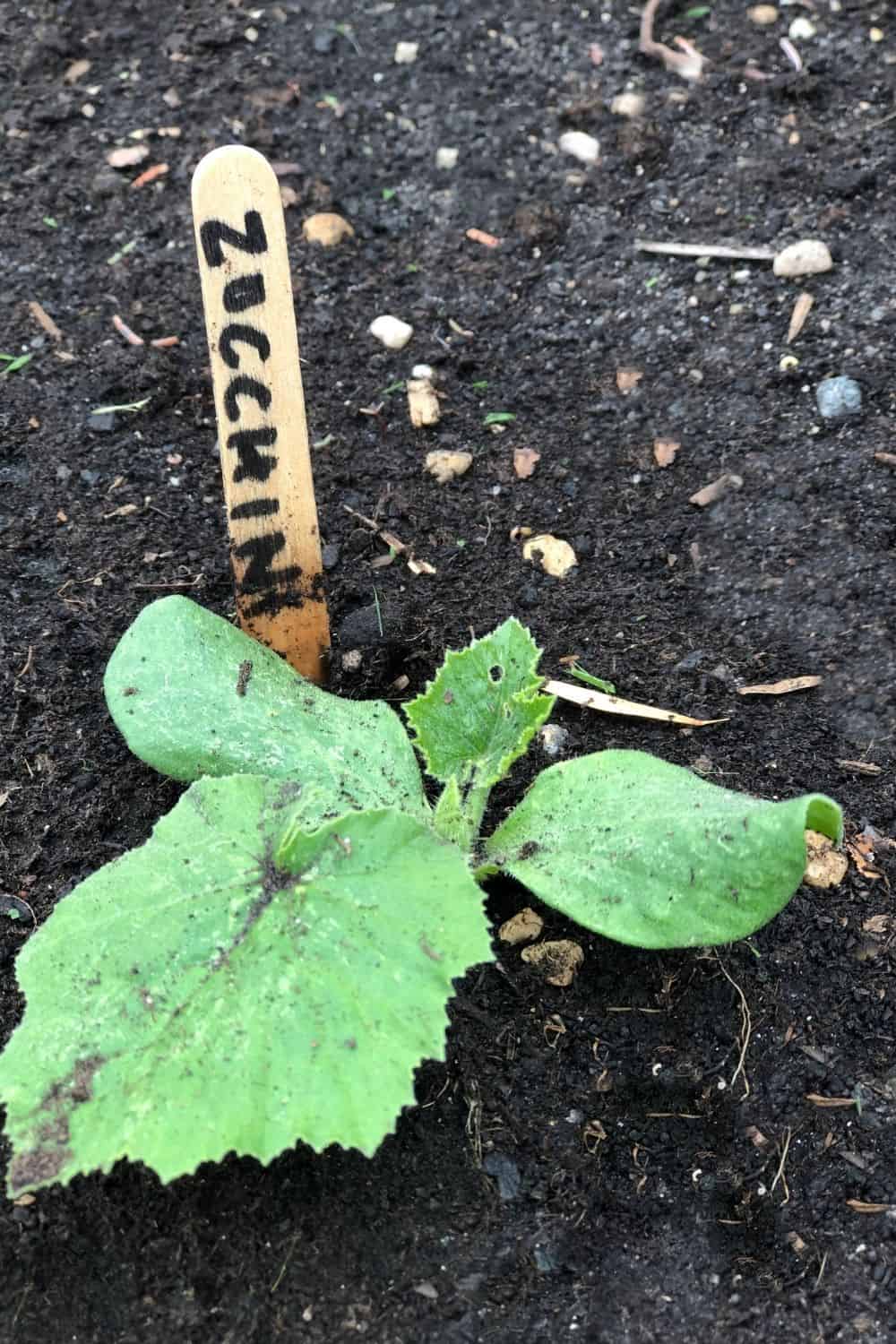
Cucurbit crops are among the easiest and most rewarding vegetable crops to grow. They have high germination rates, grow quickly, and reward you with an abundance of fresh garden vegetables.
I like to sow the seeds straight in the garden a few weeks before the last frost. It makes it easier, and I think it strengthens the plants.
Of course, if you wish, you can germinate the seeds in a propagator. A warm windowsill would be fine, too. As soon as the seeds germinate and begin to establish, you can move them to a greenhouse.
Depending on the weather, you may need to transplant the seedlings to a medium-sized pot. If it is still cold, it is not worth the risk of planting out too early, and the seedling will perform better kept protected in a larger pot. As soon as the weather has started to feel a little warmer, start to harden off the seedling and plant it into its final growing position.
When planting cucurbit crops, you need to follow the spacing recommendations for each crop, so follow the seed packet advice.
Cucurbits we don’t eat
Gourds and luffa are examples of cucurbits we don’t eat, but they still have uses. Technically, gourds can be eaten. They produce edible fruits, but most people don’t think they’re very good. They are not poisonous to humans, but there are some practical reasons they are not very edible. For one, they’re very hard to cook and eat. What does a gourd taste like?
They are very bitter and a bit like not-so-tasty squashes. Some people have said they taste a bit like zucchini (which is a squash, for those who don’t know). If you want to eat your gourds, it’s best to do so before they are fully ripe. The earlier you get them, the better. Younger gourds taken from the vine will be softer and easier to cut into and cook.
Most of the gourd family is used for decoration instead, and you’ll see them become very popular in the fall months.
Luffa, on the other hand, is another cucurbit we don’t eat, at least not when it is fully matured. Young luffa can be tasty, especially when prepared properly. It is softer than a cucumber, and it is often used in a variety of dishes. But the other thing luffa is used for is to act as a sponge. Like the artificial version (often spelled “loofah”), luffa can be useful as a bath sponge.
Learn more about growing luffa.
How to Care For Cucurbit Crops
Pick cucumbers and zucchini when the fruits are relatively small: they taste much better, and your plants will keep producing. Even when you’re careful to pick them small, sometimes a marrow-size one will surprise you.
The pumpkin and squash crops may need to be limited (remove some of the fruit). This way the energy goes into three or four large pumpkins or six to eight butternut squashes (check out these delicious butternut squash soups), rather than having a lot of poor-looking fruits. Read your seed packets for the best advice on your growing variety.
Do you need to worry about pests or disease problems with your cucurbit crops? I’ll tell you some best practices to prevent and treat insect pests and other diseases that can damage your crops. Good drainage will also be very important for healthy plants.
Cucurbit Crops Pests & Diseases
While cucurbits can be grown across the United States, where you live will impact the types of pests and diseases you may experience. Cucurbits are relatively trouble-free, but powdery mildew seems to be quite common. This downy mildew is a fungus that attacks the leaves, leaving a white dusty powder on the leaf surface.
To control an attack of powdery mildew, make a 3:1 mix of water and milk, remove the affected leaves, and spray the remaining plants every other week. This should help to keep this fungus in check.
Slugs can also be a problem, especially if they get near the fruits. Just keep your usual slug controls in place and make sure that you remove any softening fruit.
Cucumber beetles are another common problem that could occur. They damage your cucurbit plants by stunting their growth and eating the flowers, which can reduce fruit set. They also transmit a bacterial wilt disease that can damage or even kill your plants. Young plants will be the most susceptible to damage from cucumber beetles, but any plants can become infected.
Cucurbit crops can also be infected by the cucumber mosaic virus. You can recognize it by yellowing the plant’s leaves and stunted growth. Although rare, this disease is worth looking for, as infected plants must be destroyed before the virus spreads to other plants.
The cucumber mosaic virus is carried by aphids, so as long as you have a good aphid control strategy, you should avoid this virus.
Final Thoughts
Now that you know all of these new things about cucurbits, your vegetable gardens will never be the same. Cucumbers and members of the cucurbits family are great for eating, making decorations (gourds), and even cleaning up (luffa).
For best results, follow the tips in this post and learn as much as possible about the different plants in the Cucurbitaceae family.
From large farms to a small home vegetable garden, you can never go wrong with cucurbits vegetables.
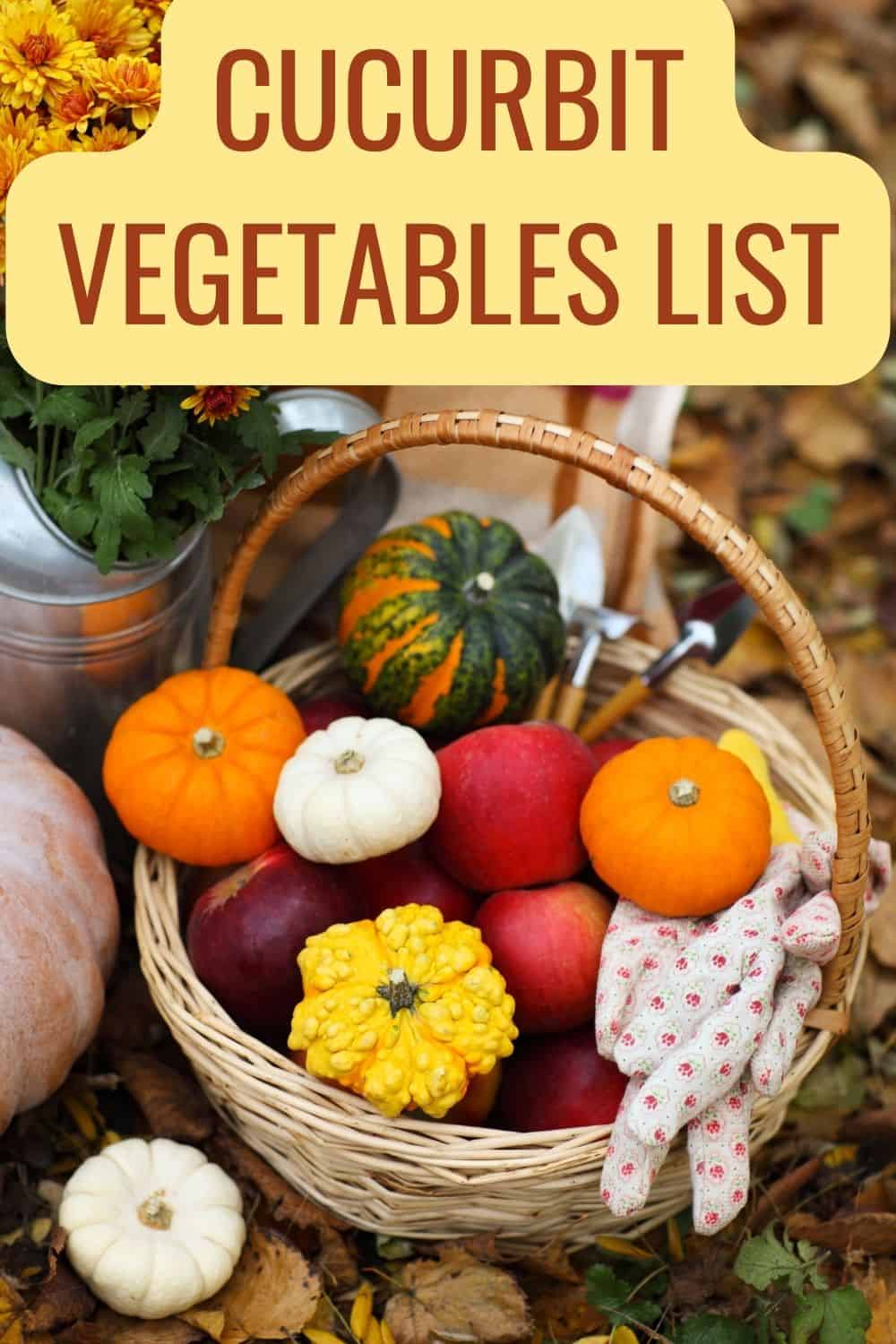

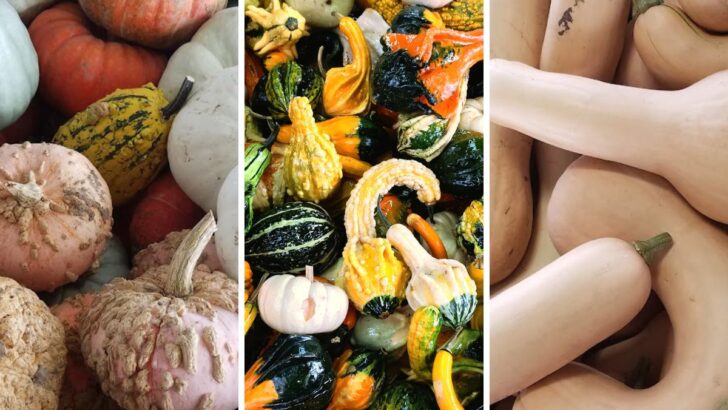

How To Get Rid Of Cucumber Beetles
Friday 11th of June 2021
[…] beetles can be found on cucurbit plants, including cucumbers, melons, and squash. In the spring, adult cucumber beetles feed on the […]
Backyard Vegetable Garden Ideas
Saturday 6th of March 2021
[…] Cucurbit Vegetables List And Care […]
How To Plan A Vegetable Garden - Step By Step Instructions
Thursday 1st of August 2019
[…] loving plants like the cucurbits, such as squash, pumpkins and cucumbers, will also do well. Just make sure to dig out some soil and […]
Vegetable Gardening For Beginners - Everything You Need To Know
Wednesday 24th of April 2019
[…] cucurbits are the courgettes, pumpkins, marrows and other squash. They are all great “starting a home […]
How to Get Rid of Squash Bugs Naturally
Wednesday 10th of April 2019
[…] all varieties of squash and also chow down on pumpkins. If you plant anything that belongs to the cucurbit family you you’ll need to learn how to get rid of squash […]